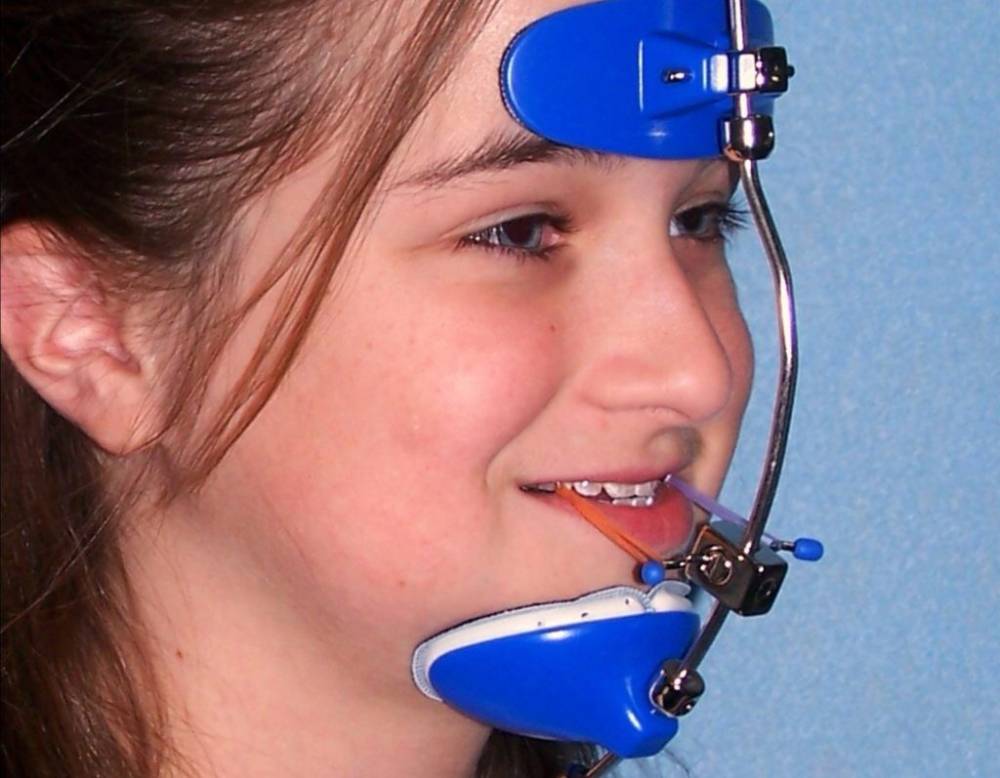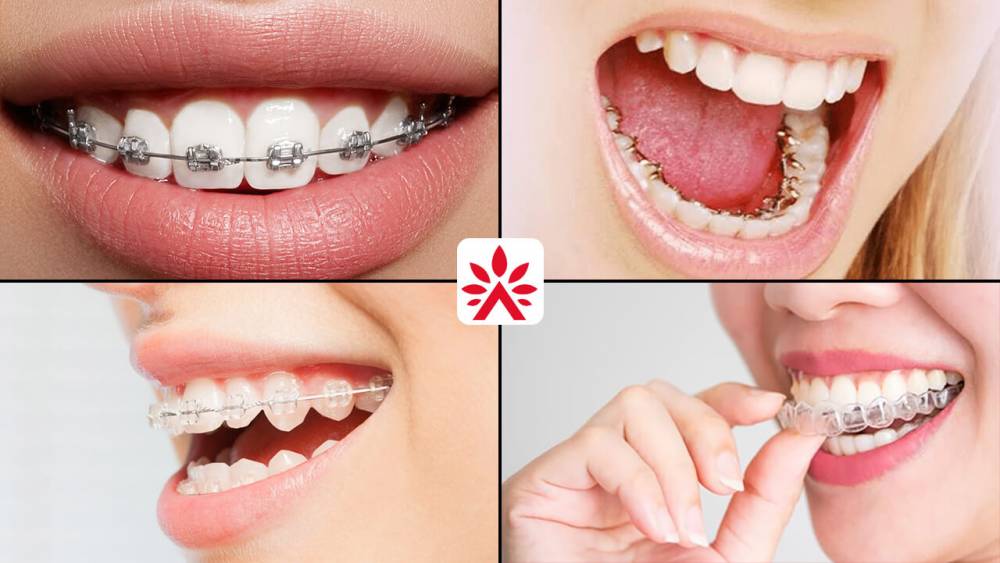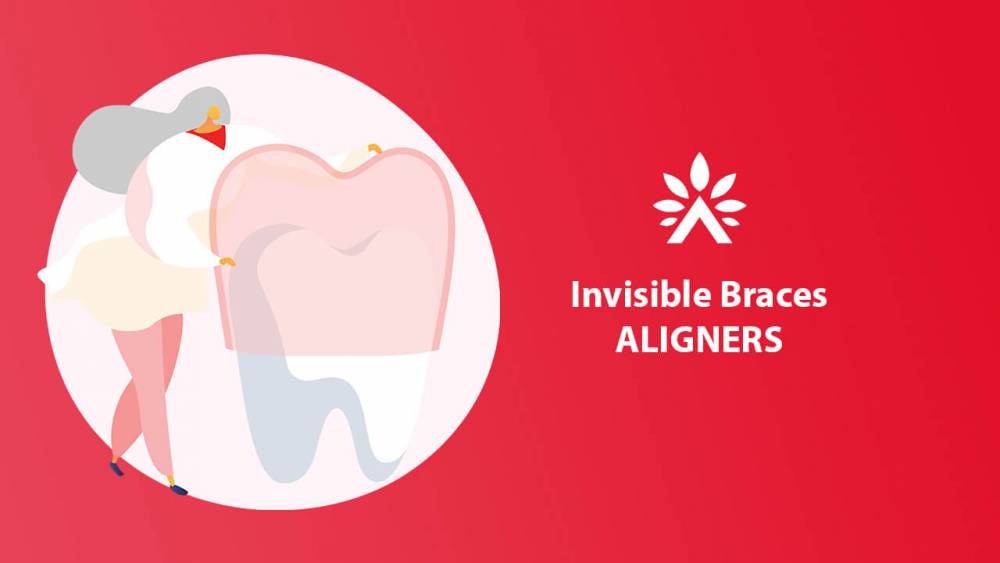
Orthodontic Headgear | Functional appliance |Palatal expansion
Does your child have a crooked smile?
Is your Child facing jaw asymmetry or malignment issues? Is their jaw growing too much or too slow? Don't worry, Science has an answer for everything and all you need to know about their jaw growth is right here!!
When should a child see an orthodontist for braces?
A child's permanent teeth start to erupt by the age of 6 years, this is when regular orthodontist checkups are important every 6 months especially if your parent or siblings have misaligned teeth or jaws discrepancies when you see any changes related to their teeth/jaw discrepancy, you should seek professional consultation immediately with teeth and jaw special dentist called an orthodontist.
Interceptive orthodontics
There are a total of 20 deciduous (milk) teeth and 32 permanent teeth. At the age of 6 months, lower central deciduous teeth are the first ones to erupt, milk teeth keep on erupting till 2.5 years of life, at this age ten on the upper arch and 10 on the lower arch have erupted. These deciduous teeth remain in the child's mouth for up to 6 years of life. Between 6-12 years, milk teeth sheds and permanent teeth start their eruption till 12 years of life. At 12-14 years all 20 deciduous teeth have gone now and been replaced by permanent ( adult) teeth. This is the time when shedding and the eruption is going side by side and is the crucial time for the malalignment of teeth and jaws. Observing any changes in the jaws or teeth that are not normal should be addressed by an orthodontist immediately. This phase of intervention is called Interceptive Orthodontics, where necessary treatments are provided to manipulate and redirect growth so that skeletal and dental occlusal problems can be treatable and the severity of it can be minimized.
So how many discrepancies are there?
There are 3 types of jaw discrepancies
1. Skeletal discrepancy
2. Dental discrepancy
3. Soft tissue discrepancy
What shall be addressed first?
Skeletal discrepancies are the first thing that needs to be addressed at an early growing age. As certain age limitations need to be kept in mind where skeletal discrepancies or abnormal jaw growths can be addressed and corrected accordingly.
The negative profound effects of having abnormal skeletal jaw growth can be a
• Convex or a concave facial profile
• Abnormal breathing patterns
• Speech and sound difficulties
• Compromised facial aesthetic
• Low developing child's confidence
Growth modifications with Orthodontics
In the past, it was suggested by grandparents to seek a professional orthodontist's help once all permanent teeth have erupted by the age of 12-14, which is ideally not good thought because most of the jaw and bone development has been treated before 14 years, and after that natural growth redirection is difficult to handle. It is advisable to start orthodontic treatment between the ages of 6-12 years in cases where jaw modifications are required because the jaw and facial bones are rapidly developing.
Growth modifications can be done through
• Headgears
• Functional appliance
• Palatal Expanders
What is Headgear?
Headgear is an extra oral orthodontic appliance that is used to redirect jaw growth and correct jaw alignment problems. It extends outside the mouth and around the back of your head or neck.
When Headgear is used?
Braces alone in some cases are not enough to correct the malalignment and irregular jaw positioning, an extra-oral appliance is required to be worn outside the mouth, to correct bite problems associated with, or move teeth into a better position and they are meant to be worn for 12-14 hours per day. An orthodontist may advise a special appliance called headgear in those circumstances.
Types of headgear
Headgear is divided into two categories according to the force direction (the anteroposterior direction of force).
1. Retraction
2. Protraction
Retraction headgear exerts distally or posteriorly directed force while protraction headgear exerts mesially or anteriorly directed force.
Headgear is also classified as
1. Cervical Pull Headgear:
2. High pull Headgear
3. Straight/combination pull
1. Cervical Pull Headgear
This is also called low-pull headgear. This type of headgear is used in short-face (low angle) class II cases where the growth of the maxilla is excessive and the maxilla is positioned too far from the mandible. It restricts the forward growth of the maxilla and, by exerting extrusive force on the upper posterior teeth, can aid in correcting the deep bite. It is attached to the braces inside the mouth and Force is applied directly below the occlusal plane. This type of headgear uses straps, that take support from the back of the neck, used to correct overjet, deep bite, and a protruding maxilla.
2. High Pull Headgear
This type of headgear is similar to cervical pull but includes a strap supported through the back of the head, used to correct overjet, overbite, and open bite cases. Force is directed above the occlusal plane. It restricts the forward growth of the maxilla and, by exerting intrusive force on the upper posterior teeth, can help in correcting an anterior open bite.
3. Reverse Pull headgear
This is also called face mask and protraction headgear. A facemask is used to correct a Class III malocclusion where the maxilla is deficient and positioned backward compared to the mandible. It brings the maxilla forward and corrects the bite. This type of headgear is mainly used for Class 3 skeletal cases or a concave facial profile to promote the growth of an underdeveloped maxilla and limit the growth of the lower jaw to balance alignment.
Components of Headgear
Extraoral component
This part of the appliance provide anchorage.
Example: Head cap, neck strap, chin cup.
Force delivery system
This part of the appliance provides the force. Examples included spring-loaded devices or heavy elastics.
Intra-oral component:
With a fixed appliance face bow is attached to the molar bands. A headgear face bow can also be incorporated into the acrylic or functional appliance for orthopedic force delivery.
Intermediate/connecting component:
It connects extra-oral and intra-oral components. Examples include a face bow.
The ideal age for Headgear Treatment
8 to 11 years of age is the ideal age for headgear treatment.
Functional appliance
Growth Modifications with functional appliance
What is a functional appliance?
Functional appliances use facial and jaw muscles. These are intra-oral appliances used to modify and improve the facial muscles and jaw bones to improve the bite and function of the upper and lower jaw. Functional appliances can produce drastic changes in the facial muscles and jaw bones most effectively in growing patients. A functional Removable appliance is usually given before the braces are applied.
Types of Functional Appliances
• Removable Functional appliance
• Fixed Functional appliance
Removable Functional appliance
Removable Functional appliances can be easily worn and removed by the child or patient itself to be worn for specific hours within a day. Although they are removable they are required to be worn throughout the day and at night and only to be removed while brushing or eating food to obtain maximum results.
Appliances like Monoblock, Twin-Block, Bionators, Activators, and Frankel's appliances are one of the most used Removable functional appliances available.
These appliances help normalize and redirect jaw growth mostly between the ages of 10-12 years of age when the jaw bones are most flexible and permanent teeth are erupting.
Fixed Functional appliance
Patients cannot remove these appliances by themselves. They are fitted on the teeth by the orthodontist These fixed appliances are used along with braces usually between the period of 12-18 years of age. These appliances are used to treat Class II malocclusion, especially in cases where the mandible is underdeveloped (retrognathic). Based on anchorage, these appliances are divided into either intramaxillary or Intermaxillary appliances.
Inter-maxillary fixed functional appliances are further divided into Rigid or Flexible.
Rigid Inter maxillary appliance includes:
- Herbst appliance
- Biopedic appliance
• Mandibular anterior repositioning appliance (MARA)
Flexible Inter-maxillary functional appliance includes
• Jasper Jumper
• Forsus spring appliance
Functional Appliances Indications
1. Functional appliances reduce the prominence of proclined upper front teeth (class II).
2. To correct increased overjet (when upper front teeth are positioned too forward than lower teeth)
3. Jaw abnormality (mild to moderate mandibular deficiency or backward lower jaw)
Timing of Treatment
Functional appliances produce good results when used before or during the adolescent growth spurt, typically between the ages of 11 and 14 in boys and 10 to 13 in girls. People who are more vulnerable to trauma or who are very self-conscious about their prominent front teeth and are being taunted or bullied might begin treatment early.
Limitations of Functional Appliances
1. Nongrowing patient (Adult patient)
2. Patient compliance (cooperation is needed for a good result)
3. Vertically growing patients (long face)
Fabrication of functional appliance
Impressions
Functional appliances can be made using high-quality impressions of the upper and lower dental arches as well as the soft tissue where they will extend.
Bite registration
The mandible will be positioned as far forward as possible for the bite registration.
Fitting the appliance
Once the appliance is formed, it will be fitted and adjusted in the patient’s mouth.
Follow-up appointments
It should be every 6-8 weeks
Growth Modification through Palatal Expansion
This type of growth modification is done through Palatal Expanders, which expand and create more space in the upper jaw through the mid-palatal suture. This type of maxillary expansion corrects crossbite and crowding cases by widening the arch where the upper arch is narrow enough to align with lower teeth or the space in the upper jaw is not enough to accommodate all erupting permanent teeth.
A narrow palate may cause:
• Crossbite/crowding
• Tooth impactions
• Airway/ breathing difficulties
• Speech problems
• Narrow Smile
Possible Reasons for a Narrow Palate
Reasons for developing a narrow or constricted palate include Hereditary/Genetics, Mouth breathing, Thumb Sucking, Nail bite, and other certain habits.
How do Expanders work?
A palatal expander is a custom-made appliance for each specific individual. This appliance has two interconnected halves connected through a screw. To activate the device, you simply turn the screw rotation each day with a key. This produces tension at the junction of the mid-palatal suture causing the palatal bones to move apart gradually. Once the desired expansion is achieved, the appliance is left for a few more months passively to allow the new bone to form within the gaps and stabilize the jaw. The time duration to wear expanders is for 3-6 months altogether or a year.
Types of palatal Expanders:
There are three types of a palatal expander
• Hyrax Rapid Palatal Expander
• HAAS Expander
• Quad Helix Expanders.
Orthodontic Dental Camouflage
A treatment Option
Orthodontic camouflage is an alternative to growth modifications to correct the skeletal relationships by orthodontically repositioning the teeth through Braces. Skeletal, Dental, and Soft tissue discrepancies can be corrected alternatively through braces once the age for growth modifications has surpassed. It has certain limitations only to correct mild to moderate cases with about 7-10 mm crowding.
Braces used for Orthodontic Camouflage
Certain diverse types of braces are available to perform orthodontic treatment depending on the need of the patient, including Fixed and removable types. Fixed Braces include Metallic braces, Ceramic, and Lingual braces.
Removable type includes Aligners, a modern technology rapidly replacing conventional braces in modern dentistry. Hawley active Retainer can also be sometimes used as an active removable orthodontic appliance.
Surgical orthodontic treatments: when are they needed?
In cases, where there is failure to achieve complete dental compensations through dental camouflage require Surgical orthodontic treatments in moderate to severe cases where crowding exceeds >10mm and severely reduced Inter-Incisal angles of lesser than <105. Wit's appraisal also plays a significant role in deciding the final treatment. Orthognathic surgery also requires a pre-orthodontic treatment to obtain a complete dentoalveolar
decompensation to achieve desirable effects. Failure to achieve these decompensations may result in compromised surgical corrections.
Frequently Asked Questions
What about brushing your teeth while wearing headgear?
Be sure to brush twice daily and remove your headgear while brushing your teeth.How often do I wear my headgear?
You should wear your headgear at least 10- 12 hours per day as guided by your orthodontist.
Does headgear hurt?
Your teeth and muscles can be initially sore for the first 2-3 days and will start to adjust accordingly, but you must wear your headgear consistently to produce desirable results.
How long will I need braces?
Braces are worn anywhere between 6 months to 18 months depending on the severity of the case, but this timeline can differ and your orthodontist will best let you know how much duration your case needs.
Will treatment change my facial profile?
Yes, any orthodontic treatment will produce changes in your soft tissue profile, but your orthodontist knows best to bring the best possible results in your facial profile and an improved smile and best function.
Which is better? Braces or Aligners
Braces and Aligners both work effectively depending on what can work best for which case and also on patient and orthodontist choice. Ideally, Aligners are more acceptable due to their aesthetic and their unmatchable benefits of being removable, and invisible, having minimal dental office visits, and having treatment duration is almost half of the other conventional braces like metal, ceramic, and lingual braces.
Can I eat with Headgear?
The headgear should be removed at meal times.
Does headgear hurt?
After the headgear has been placed, you may experience tooth pain or discomfort for three to five days. It may be managed with over-the-counter pain medication, if necessary.
How frequently do I require an appointment?
You'll need regular checkups to monitor the progress of the headgear (every 6 to 8 weeks). Make sure to bring your headgear with you to every appointment.
What should I do if my headgear develops a problem?
Stop wearing headgear and call as soon as possible to make an appointment. Do not wait until your next scheduled appointment, and bring all of the headgear's components with you.
How long will I wear headgear?
The patient's cooperation is the most crucial element in the effectiveness of headgear treatment. You must use the headgear for the number of hours recommended to you. This may vary from 12 to 14 hours per day. However, avoid using it while playing sports. Headgear treatment may take 1 to 2 years.
How often will I have to wear my functional appliance?
It is advised to wear your appliance full-time (day and night). Treatment time will take longer if the appliance is not worn full-time. The only time you should remove your appliance is to clean it, your teeth, and while playing sports.
Can I eat with my functional appliance in place?
Eat while your appliance is still in place, as advised. The appliance may be taken out if you find it difficult to use it while eating. You must, however, immediately re-insert it.
How long does a functional appliance treatment last?
The treatment time varies depending on the severity of the problem. Most treatments last 9 to 12 months on average. You'll need to visit your orthodontist regularly during this period.
How should the functional appliance be cleaned?
It is best to clean the functioning appliances using a toothbrush under running water or soak them in specialized disinfectant recommended for removable oral appliances.
Will my functional appliance hurt?
You might feel a little soreness around your jaw. Any discomfort might only last a week or two, and as your jaw adjusts to its new position, you'll soon notice that it no longer hurts.
Do I need to avoid any foods when using my functional appliance?
Certain foods can damage your appliance, so avoid hard, chewy foods like hard-boiled candies, chewing gum, sticky toffees, chocolates, and crunchy foods.
What happens if my functional appliance breaks?
You must contact your orthodontist immediately if your functional appliance breaks so that a new appliance can be made.
How long will a child wear Headgear?
In most cases, a headgear shall be worn for 12-18 hours per day for at least 12-18 months. It’s most effective to wear during the age duration between 6-13 years.
Conclusion
From the above overview, it is suggested for a child have an early orthodontic evaluation by the age of 6-8 years to have the best possible treatment options available according to the jaws and teeth misalignment to avoid the severity of the case. If you see any discrepancy in the jaws or misaligned teeth in a child, or you have observed jaw or teeth misalignment running in your family like in siblings, cousins and parents, a child shall be evaluated every 6 months once the permanent teeth start to erupt. Aligners treatment starts when all permanent teeth have erupted in the mouth around 12 to 14 years. You can get the aligners box from our aligners providers all across the world. Our Aligners providers are Braces specialists (orthodontists), they also provide growth modification appliances like headgear functional appliances, maxillary expanders, etc. if your child needs them. Do not wait to book an appointment today
Posted On 12 Nov, 2022


